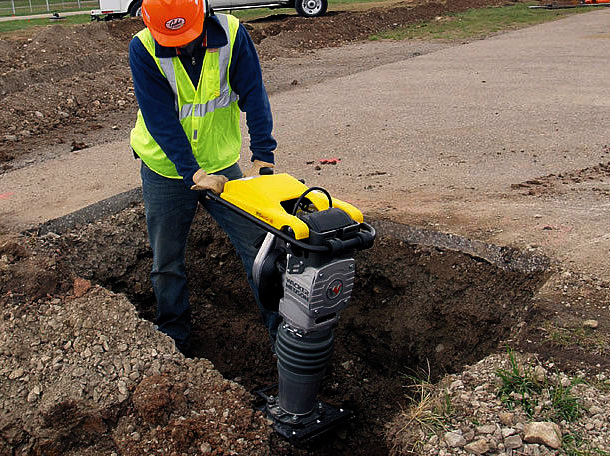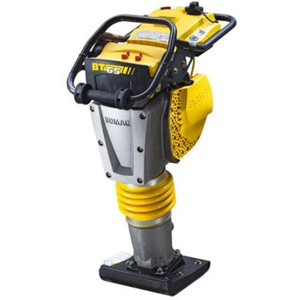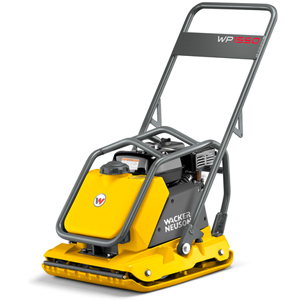The natural soil is composed of several elements, including minerals, air, water, and organic matter. The compacting process makes the soil more dense. Through a methodical approach to soil compaction, you can reduce soil settlement, increase load-bearing capacity, and decrease water infiltration. The foundations, sidewalks, driveways, and other structures are stable and may be supported by a well-compacted soil.
Compaction of soil is an essential part of every construction site in order to increase the stability of the ground. Today, soil compaction machines like vibratory forward plate compactors, tamping rammers, vibratory rollers, and so on are widely available. Choosing the right product for your site is dependent on many factors, such as the size of the project, the location, and the length of the project.
How does a vibratory rammer work?
Vibratory rammers compact soil by using the phenomenon of vibration. Due to its sleek body and easy operation, it can reach into small nooks, making it the perfect equipment to use in hard-to-reach places. These machines are powered by either petrol or diesel. Vibratory rammers use high impact force to compact soil mechanically. Therefore, they are ideal for use during the construction of roads and pavements, where strong soil compaction is required. A vibratory rammer is available in a variety of sizes and attachment options to suit the needs of various sites. Different vibratory rammers are distinguished by their engine type (two-cycle, four-cycle, or diesel), shoe size, weight, travel speed, and impact force. Consider the following factors before investing in vibratory compaction rammers.
A tamping rammer is usually tilted at an angle while compacting the soil, so the weight of the equipment plays a role in its selection. The handle provided on top of the machinery allows tradesmen to maneuver around. Rammers have a plate on the lower portion that compacts the soil. Energy is provided by an engine powered by diesel or petrol, and the efficiency of the rammer depends on its capacity. Shock force is generated by the engine’s whipping system and foot. Compaction is performed at a frequency of 500-700 blows per minute. Because vibratory rammers tend to lean forward during operation, you should always handle the machine with great care.
How does a plate compactor work?
An indispensable piece of equipment on any construction site is the plate compactor. These machines come in many sizes and styles for compaction. The base of a plate compactor consists of a heavy steel plate. They resemble push mowers, but they serve a different purpose. Compaction is much easier with this versatile equipment because of its various attachments and extensions. The machinery consists of a flat, heavy plate powered by diesel or gasoline. Through the rapid impact and heavy forces applied by the machinery, the soil becomes more tightly packed, eliminating any further risk of settlement.
Even though plate compactors are bulky, they come in a variety of sizes. The base plate size, travel speed, and power of the equipment can be selected based on the size of the project. Plate compactors feature a wear-resistant iron base plate that provides strength to the system. It is powered by either diesel or petrol, providing energy for thrust. In most cases, compactors are equipped with a petrol engine with a choke to start the machinery. Start the engine by turning on the switch and pulling the choke cord. You have to constantly direct and maneuver the handle of the plate compactor for it to move forward on its own. To control the movement of the equipment completely, you have to exert some resistance. If you flip the power switch, you will be able to turn off the machine but it will need to cool down before it can be moved.










